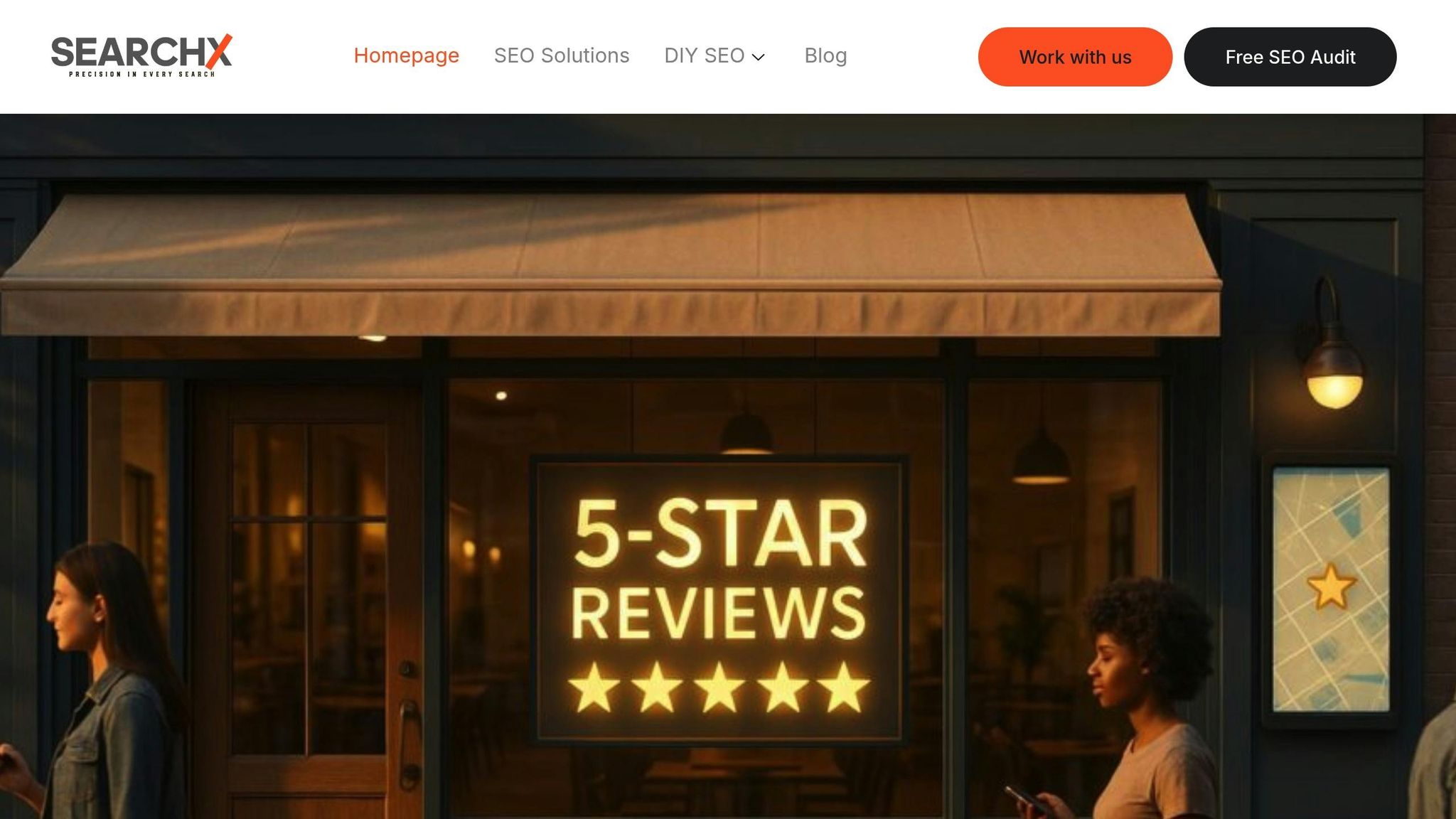Minification is a simple way to make websites load faster by reducing the size of CSS, JavaScript, and HTML files. It removes unnecessary code like spaces, comments, and line breaks, making files smaller without changing how they work. This process can shrink file sizes by up to 60%, leading to faster downloads, smoother browsing, and better SEO rankings.
Key Points:
- Smaller Files: Minification reduces file sizes by 20-60%, improving download speeds.
- Better Performance: Faster page loads improve user experience and lower bounce rates.
- SEO Boost: Search engines favor fast-loading sites, helping with rankings.
- Cost Savings: Smaller files reduce bandwidth usage and hosting costs.
- Caching Benefits: Smaller files are easier to store and retrieve, speeding up repeat visits.
By using tools like Webpack, Terser, or WordPress plugins like Autoptimize, you can automate this process and enjoy faster websites that keep visitors engaged.
Performance Tips: Minifying HTML, CSS & JS
What Causes Slow Website Loading
A slow-loading website often boils down to a mix of inefficient code and performance barriers that drag down speed. Tackling these issues requires a sharp focus on optimizations like minification to get things moving smoothly.
One major culprit is bloated CSS, JavaScript, and HTML files. These files often contain extra whitespace, comments, or redundant code that, while helpful during development, can significantly slow down file downloads.
Another common issue is too many HTTP requests. When a website requires multiple server trips to load CSS, JavaScript, images, fonts, and other resources, it can seriously delay the page load. Even small files can add up when browsers have to juggle dozens of requests.
Slow server response times can also be a major factor. This can happen when servers are overloaded, running inefficient queries, or just lack the necessary resources to handle requests efficiently.
Improper caching is another issue. Without effective caching, browsers are forced to re-download the same files repeatedly, wasting both time and bandwidth.
Then there’s the problem of uncompressed CSS and JavaScript. Serving these files without compression (like gzip) unnecessarily increases their size, making downloads slower than they need to be.
Third-party scripts, such as social media widgets, analytics tools, or ads, can also bog down load times. While these scripts may add functionality, they often come at the cost of speed.
Finally, large, unoptimized images can be a nightmare for users on slower connections, significantly impacting how quickly a page loads.
All these factors combined can stretch load times to frustrating levels, driving away visitors and negatively impacting SEO. With modern users expecting pages to load in just 2-3 seconds, addressing these issues isn’t just a technical task – it’s a business priority. Minification and other optimization strategies are key to creating faster, more user-friendly websites.
How Minification Fixes Performance Problems
Minification addresses website speed problems by trimming unnecessary code that slows things down. It removes elements like whitespace, comments, and line breaks – features that make code easier for developers to read but add extra weight during file transfers.
The process also involves shortening variable and function names, cutting down on the number of characters in the code. Since browsers only need functional code to operate, these changes don’t affect how your site performs but significantly reduce file sizes.
Additionally, minification removes any formatting or comments that browsers don’t need. It can even combine multiple files, reducing HTTP requests and helping pages load faster. The result? Smaller files that download quicker, improving overall site performance.
Smaller File Sizes for Faster Downloads
Minified files can shrink by 20-40%, leading to noticeable improvements in download speeds. For example, a 100KB JavaScript file might slim down to 60KB after minification, saving 40KB of data transfer per visitor.
This reduction is especially important for mobile users on slower networks. On a 3G connection, saving 40KB could make the difference between a 3-second load time and a 5-second one – critical for keeping visitors engaged.
Smaller files also mean faster browser parsing. With less code to process, the browser’s JavaScript engine can execute and render pages more quickly. This is particularly helpful for older devices or budget smartphones that have limited processing power.
When applied across an entire site, the benefits add up. Minifying CSS, JavaScript, and HTML files totaling 500KB could bring the total down to 350KB – a 30% reduction that users will feel through faster page loads.
Better Caching Efficiency
Minified files also boost browser caching performance. Smaller files take up less space in the browser’s cache, allowing more resources to be stored locally for quicker access on return visits.
With higher cache hit rates, minified files are less likely to be removed from the cache. For instance, a 50KB minified CSS file has a better chance of staying cached than a 100KB unminified version, particularly when users visit multiple sites in a day.
Content Delivery Networks (CDNs) benefit too, as they can store and serve these smaller files more efficiently. This reduces the physical distance data needs to travel, speeding up access for global visitors.
Over time, these caching benefits compound. Returning visitors experience faster load times since their browsers already have the minified files stored. This not only eliminates the need to re-download resources but also reduces overall resource usage, enhancing the browsing experience.
Lower Bandwidth Usage and Hosting Costs
Minification helps lower server bandwidth usage by delivering smaller files to every visitor. For instance, if your site gets 10,000 visitors a month and you save 200KB per visit through minification, that’s 2GB less bandwidth consumed monthly.
These savings can lead to reduced hosting costs, especially for high-traffic sites. If your hosting plan charges based on bandwidth, cutting file sizes by 30% could lower your monthly bill by a similar percentage. For a business spending $200 per month on hosting, this could translate to $60 in savings.
Minification also improves server performance. With less data to process and transfer, your server can handle more users at once, potentially delaying the need for costly server upgrades.
Beyond hosting expenses, the benefits extend to user experience. Faster websites often lead to higher conversion rates, whether through increased sales, sign-ups, or engagement. In this way, minification not only reduces costs but can also positively impact your bottom line.
Minification Results on Website Performance
Minification trims down file sizes, making them quicker to download. This leads to faster rendering times and a browsing experience that feels smooth and responsive. Plus, these speed improvements can positively impact how search engines rank your site.
Performance Gains and SEO Rankings
Page loading speed plays a key role in search engine optimization. By shrinking file sizes through minification, your pages load faster, aligning with performance standards set by major search engines. The result? Better rankings and stronger organic search performance.
Better User Experience
Quick-loading pages mean happier visitors. Faster speeds lower bounce rates and encourage users to stay longer, exploring more of your content. This is true for both desktop and mobile users, creating a seamless experience that can even lead to higher conversion rates.
Up next, discover the tools and techniques to start implementing minification and enjoy these benefits for your site.
How to Implement Minification Tools and Methods
Minification is a straightforward process that enhances website performance by reducing file sizes. The method you choose – whether automated tools or manual techniques – depends on your project’s scale and your technical expertise. Here’s a closer look at how to streamline your website files effectively.
Popular Minification Tools and Plugins
Several tools and plugins can help you simplify the minification process:
- CleanCSS: This tool optimizes CSS by stripping out unnecessary whitespace, comments, and redundant code. It’s easy to integrate into build processes and offers both command-line and API access for developers.
- Webpack: Known for its robust bundling capabilities, Webpack not only compresses files but also manages module dependencies. It can split large files into smaller chunks, making it ideal for JavaScript-heavy applications and modern web development workflows.
- Gulp: A task automation tool that simplifies file minification as part of your build process. It handles multiple file types simultaneously, giving developers greater control over optimization.
- Autoptimize: Designed for WordPress users, this plugin offers a user-friendly interface to automatically minify HTML, CSS, and JavaScript files. It also handles file concatenation and defers non-critical scripts to improve page loading times.
- Terser: A go-to tool for JavaScript minification, especially for ES6+ code. It ensures compatibility with modern JavaScript features while achieving significant size reductions.
While these tools automate much of the process, manual approaches can also be used for fine-tuning specific needs.
Manual vs. Automated Minification
When deciding between manual and automated minification, it’s important to weigh the pros and cons of each approach. Here’s a comparison:
| Aspect | Manual Minification | Automated Minification |
|---|---|---|
| Efficiency | Time-intensive; requires expertise | Quick processing; saves time |
| Accuracy | Higher risk of errors; inconsistent results | Minimal errors; consistent performance |
| Scalability | Difficult to manage for large projects | Easily handles large-scale tasks |
| Control | Allows precise fine-tuning | May encounter compatibility challenges |
Manual minification gives you granular control but can be tedious and error-prone, especially for larger projects. Automated tools, on the other hand, are faster, more reliable, and integrate seamlessly into workflows, making them a practical choice for most businesses.
Using SearchX for Minification and SEO

If you’re looking for professional help with minification and broader website optimization, SearchX offers specialized technical SEO services. Their strategies focus on improving website performance, enhancing user experience, and boosting search engine rankings.
SearchX prioritizes Google’s Core Web Vitals, targeting metrics like Largest Contentful Paint (LCP) and Cumulative Layout Shift (CLS) to ensure fast-loading, user-friendly websites. By including minification in their technical SEO audits, they ensure that HTML, CSS, and JavaScript files are optimized without disrupting site functionality or hosting environments.
What makes SearchX stand out is their tailored approach. Instead of applying one-size-fits-all solutions, they address the unique challenges of each business, ensuring their optimization efforts deliver meaningful results. For businesses seeking expert guidance, SearchX’s technical SEO services provide the expertise needed to achieve measurable improvements in website performance.
Conclusion: Why Minification Matters for Website Speed
Minification is a simple yet effective way to boost your website’s performance by cleaning up unnecessary code in HTML, CSS, and JavaScript files. By stripping out extra characters, spaces, and comments, this process makes your files leaner, which translates to faster load times and a better overall experience for your users.
Speed matters. When your website loads quickly, visitors are more likely to stick around, interact with your content, and even make purchases. Plus, search engines reward faster websites with higher rankings, making speed a win-win for both user satisfaction and SEO.
For businesses trying to maximize their budget, minification is a smart choice. Instead of spending on costly server upgrades or high-end hosting, you can use free or low-cost tools to shrink file sizes. This not only cuts bandwidth costs but also ensures faster delivery of your content across different devices and connection speeds. It’s a practical move that delivers clear benefits without breaking the bank.
Getting started with minification is easier than you might think. You can use automated tools like Autoptimize for WordPress, build systems like Webpack, or even manually tweak your files. The important thing is to take that first step and start optimizing.
With users expecting websites to load in under three seconds, minification helps you meet these demands without compromising functionality or design. It’s a straightforward optimization that every site – big or small – can benefit from.
Start using minification today to make your website faster, more efficient, and better equipped to engage visitors and achieve your business goals. It’s a small change that can make a big difference.
FAQs
How does minification improve SEO and boost search rankings?
Minification plays a key role in boosting SEO by speeding up your website’s load time – a factor that search engines like Google prioritize heavily. When pages load quickly, users enjoy a smoother experience, which leads to lower bounce rates and higher engagement. These improvements can have a direct, positive impact on your search rankings.
The process of minification involves stripping away unnecessary elements from your site’s code, such as extra spaces, comments, and line breaks. By cleaning up the code, your site operates more efficiently. This not only helps with search engine performance but also makes your website more enjoyable for visitors, encouraging them to stay longer.
What’s the difference between manual and automated minification, and which option is better for your website?
When it comes to reducing file sizes, automated minification tools like UglifyJS and CSSNano are a go-to solution. They strip out unnecessary characters from code, making the process both quick and efficient – perfect for large or frequently updated websites. On the other hand, manual minification involves hand-editing the code. While this method offers developers complete control, it’s time-intensive and increases the likelihood of errors, especially with larger files.
For most websites, automated minification stands out as the smarter choice. It’s efficient, consistent, and minimizes the chances of mistakes, all while speeding up your site without demanding significant manual effort.
Can minification break my website’s design or functionality, and how can I avoid this?
Minification, when properly executed, won’t interfere with your website’s design or functionality. The process simply strips out unneeded characters – like spaces, line breaks, and comments – from your code without changing how it operates.
To prevent any hiccups, take care when setting up your minification tools. Be sure they preserve essential elements of your code, such as key JavaScript variable names. Afterward, thoroughly test your website to make sure everything runs smoothly. This way, you can keep your site both fast and fully operational.




